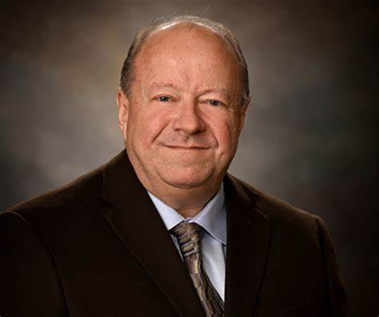
Gene therapy is a rapidly advancing field that holds transformative potential for spinal surgery, particularly in promoting natural bone growth and potentially reducing the need for traditional implants. This innovative approach aims to harness the body’s genetic mechanisms to enhance healing, stimulate regeneration, and address degenerative spinal conditions in a less invasive way. Dr. Larry Davidson recognizes that for patients requiring spinal fusion or other complex procedures, gene therapy could significantly change the surgical landscape by encouraging natural bone formation, minimizing recovery times, and potentially reducing the need for hardware. As research and technology continue to evolve, gene therapy is poised to offer new possibilities for spinal care.
Understanding Gene Therapy in Spinal Surgery
Gene therapy involves modifying or introducing genetic material into a patient’s cells to promote healing, tissue regeneration, or disease treatment. In the context of spinal surgery, the primary focus of gene therapy is to promote bone growth and enhance the fusion process. Traditionally, spinal fusion surgery relies on implants, such as metal rods, screws, and bone grafts, to stabilize the spine and facilitate the fusion of two or more vertebrae. However, this approach can lead to complications such as infections, implant failure, and extended recovery times.
Gene therapy aims to address these issues by enhancing the body’s natural ability to heal and grow new bone tissue. Researchers are working on ways to introduce specific genes into the patient’s spine that will stimulate bone-forming cells, known as osteoblasts, to regenerate bone more effectively. By delivering these genetic instructions directly to the affected area, gene therapy has the potential to bypass the need for traditional implants, creating a more natural and efficient fusion process.
How Gene Therapy Promotes Natural Bone Growth
One of the most promising applications of gene therapy in spinal surgery is its ability to promote natural bone growth, offering a significant advantage over traditional methods that rely on bone grafts—either autografts from the patient’s own body or allografts from donors. These grafts, while useful, often require additional support from implants to stabilize the spine during healing and may not always achieve full fusion. Gene therapy, however, targets the biological process of bone formation at the cellular level by delivering specific genes that encode proteins involved in bone growth, such as bone morphogenetic proteins (BMPs). BMPs are key signaling molecules that stimulate osteoblasts, the cells responsible for bone formation, resulting in faster and more robust bone regeneration. Beyond BMPs, researchers are also exploring other gene-based approaches that regulate growth factors to enhance overall tissue repair. This gene-driven bone regeneration not only improves the success rate of spinal fusion but also reduces the need for external hardware like screws and rods, offering a more natural and efficient healing process.
Advantages of Gene Therapy Over Traditional Implants
One of the most significant advantages of gene therapy in spinal surgery is its potential to reduce or eliminate the need for traditional metal implants like rods and screws, which come with risks such as infection, hardware failure, and the need for additional surgeries. These implants can also limit spinal flexibility, leading to discomfort and reduced mobility over time. By promoting natural bone growth, gene therapy allows the body’s regenerative processes to provide the necessary stability for spinal fusion, eliminating the complications associated with foreign implants. This approach not only reduces recovery time but also offers better long-term outcomes. Additionally, gene therapy’s ability to target healing at the cellular level minimizes the need for invasive procedures and large incisions typically required for implant placement. Another key advantage is the potential for personalized treatment, as gene therapy can be tailored to a patient’s specific genetic makeup, offering a customized approach to spinal fusion that improves the effectiveness of the treatment and enhances overall patient outcomes.
Current Research and Progress in Gene Therapy for Spinal Surgery
Although gene therapy in spinal surgery is still in the experimental phase, considerable progress has been made in recent years. Preclinical studies have shown that gene therapy can successfully stimulate bone growth and enhance fusion in animal models by using viral vectors—harmless viruses engineered to deliver therapeutic genes—to introduce bone-promoting genes into the spine. These studies have yielded promising results, with improved bone formation and higher spinal fusion rates compared to traditional methods. Beyond viral vectors, researchers are also exploring non-viral delivery systems, such as nanoparticles and biodegradable scaffolds, to reduce the risks associated with gene therapy while ensuring safer and more controlled gene delivery. As these technologies are refined, clinical trials are expected to follow, potentially paving the way for gene therapy to transform the treatment of complex spinal conditions by offering patients a less invasive, more natural path to recovery.
Potential Challenges and Future Outlook
Despite its potential, several challenges remain before gene therapy becomes a routine part of spinal surgery. One of the primary concerns is ensuring the safe and effective delivery of genetic material to the target area. While viral vectors have shown promise in delivering therapeutic genes, there is always a risk of unintended side effects, such as immune reactions or off-target effects that could impact other tissues.
Another challenge is the long-term durability of gene therapy. Researchers need to ensure that the therapeutic effects of gene delivery are sustained over time, particularly in patients with chronic conditions or those requiring extensive spinal fusion. Ensuring that the introduced genes continue to promote bone growth for the necessary duration without causing adverse effects is a key area of ongoing research.
However, the future outlook for gene therapy in spinal surgery remains optimistic. As delivery methods improve and more is understood about the genetic mechanisms involved in bone regeneration, gene therapy is expected to become a viable alternative to traditional implants. The potential for gene therapy to revolutionize spinal fusion surgery by promoting natural bone growth, reducing complications, and enhancing patient outcomes is immense.
Gene therapy is on the horizon as a groundbreaking advancement in spinal surgery, offering the potential to promote natural bone growth and reduce the need for traditional implants. By leveraging the body’s genetic mechanisms to stimulate bone formation, gene therapy could provide a less invasive, more efficient solution for spinal fusion patients. Although challenges remain, Dr. Larry Davidson sees that ongoing research and technological advancements are paving the way for gene therapy to help transform spinal care, providing patients with safer, more personalized treatment options and improved long-term outcomes. As gene therapy continues to develop, it may soon offer an exciting new frontier in the treatment of spinal conditions.

